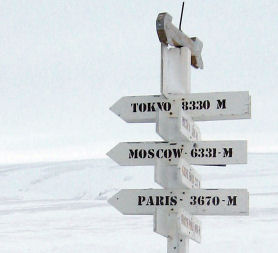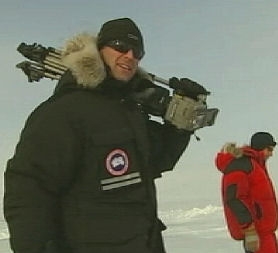Camping in the Arctic: icy beds and polar bears
What does it feel like to sleep on an ice block floating on top of 200 metres of ocean? Channel 4 News Science Correspondent Tom Clarke blogs from his tent in the Arctic.

I’ve done a fair bit of camping before. Occasionally, even, on the odd assignment for Channel 4 News. But I’ve never pitched a tent 500 kilometres from the nearest hot shower on frozen arctic ice floating on top of 200 metres of ocean. This however, is exactly what we’re going to be doing starting this weekend as we join a small team of scientists at a temporary ice base in the Canadian arctic.
Few people brave the tail end of the arctic winter out on exposed sea ice. But these are scientists with a mission, answering one of the biggest questions in the current climate change debate: what’s happening to the oceans? And because it’s the arctic ocean that could be most influenced by our changing atmosphere these researchers prefer their science on ice.
The main priority for the team is to understand ocean acidification. Five years ago no one save a few oceanographers had heard of the phenomenon. Now it dominates discussions about the future impacts of our changing atmosphere.
Ocean acidification is exactly what it says – the seas getting slightly more acidic as increasing levels of carbon dioxide in the atmosphere dissolve in the ocean. We’re not talking vinegar or lemon juice here – but a tiny shift in the ocean’s chemistry towards the acidic looks to be having a major impact.
Since the industrial revolution the oceans have absorbed about a third of all man-made carbon dioxide emissions.
They’re doing it at a rate of about 20 million tonnes of CO2 per year as tiny sea animals (plankton) and their plant cousins (phytoplankton) absorb the dissolved carbon dioxide to make their shells. (It’s how things like the white cliffs of Dover came to be).
The problem is, according to Professor Carol Turley, a pioneer of ocean acidification research at the Plymouth Marine Laboratory in Devon, “the bucket is getting full”. The oceans are getting to the point where they can’t absorb as much carbon because an acidic ocean starts to dissolve the very shells of those tiny plankton and phytoplankton. It’s one of the many nasty twists in the planet’s complex life support system that scientists call positive feedbacks.
Since the industrial revolution the oceans have absorbed about a third of all man-made carbon dioxide emissions.
Researchers are already seeing the effects of acidification on fast vanishing coral reefs. The question that needs answering now is how advanced is this process in the arctic?
The Arctic Ocean is one of the most productive in the world – more fish live on its fringes than any other ocean. That also means like a vast lung, it’s absorbing a disproportionate amount of the CO2 we pump into the planet’s atmosphere.
If that process slows down by how much might global warming speed up? By how much might plankton vanish changing this ocean’s food web all the way from Icelandic prawns to killer whales?
The scientists at the ice base will be focusing on this, but also looking at the effects on the ocean of the changing arctic.
The sea is getting warmer, the ice is getting thinner and covers less of the ocean in most summers, new sources of climate warming methane have been found bubbling up from its depths.
All these seemingly unrelated factors conspire to make the arctic one of the feared “tipping points” that could propel us towards even more rapid and dangerous climate change.

But these polar researchers are also aware of the recent PR disaster suffered by climate science. Mistakes made in the last IPCC report and the handling of emails leaked from the Climatic Research Unit at the University of East Anglia may have left people less trusting of how they go about their work and their conclusions.
The ice base was the idea of the Catlin Arctic Survey. An outfit led by veteran polar explorer Pen Hadow and sponsored by Catlin, a major insurance business (if you want to know what their interest is in climate change think back to Hurricane Katrina).
Last year the Catlin Arctic Survey team attempted to mix old-fashioned exploration with the latest science by measuring the thickness of arctic sea ice as they walked to the North Pole. This year another team of explorers is doing a similar thing, while a second dedicated team are looking after the scientists – and keeping an eye on us – during our visit.
I’m glad we’ll be in experienced hands. Floating sea ice isn’t the easiest place to work. For a start the ice base is cold – -20o C right now with strong winds sometimes making it -35o C. Add to the mix the possibility of cracks appearing in the ice and cutting our campsite in two. Oh, and then there are polar bears, our planet’s largest land predator.
Encouragingly, they’re well fed at this time of year and it’s someone’s job to be on guard for them 24 hours a day. But we’ve been told not to keep any food in our tents just in case…
So stay tuned for more on Arctic Ocean science, roughing it on the ice and hopefully a polar bear sighting.